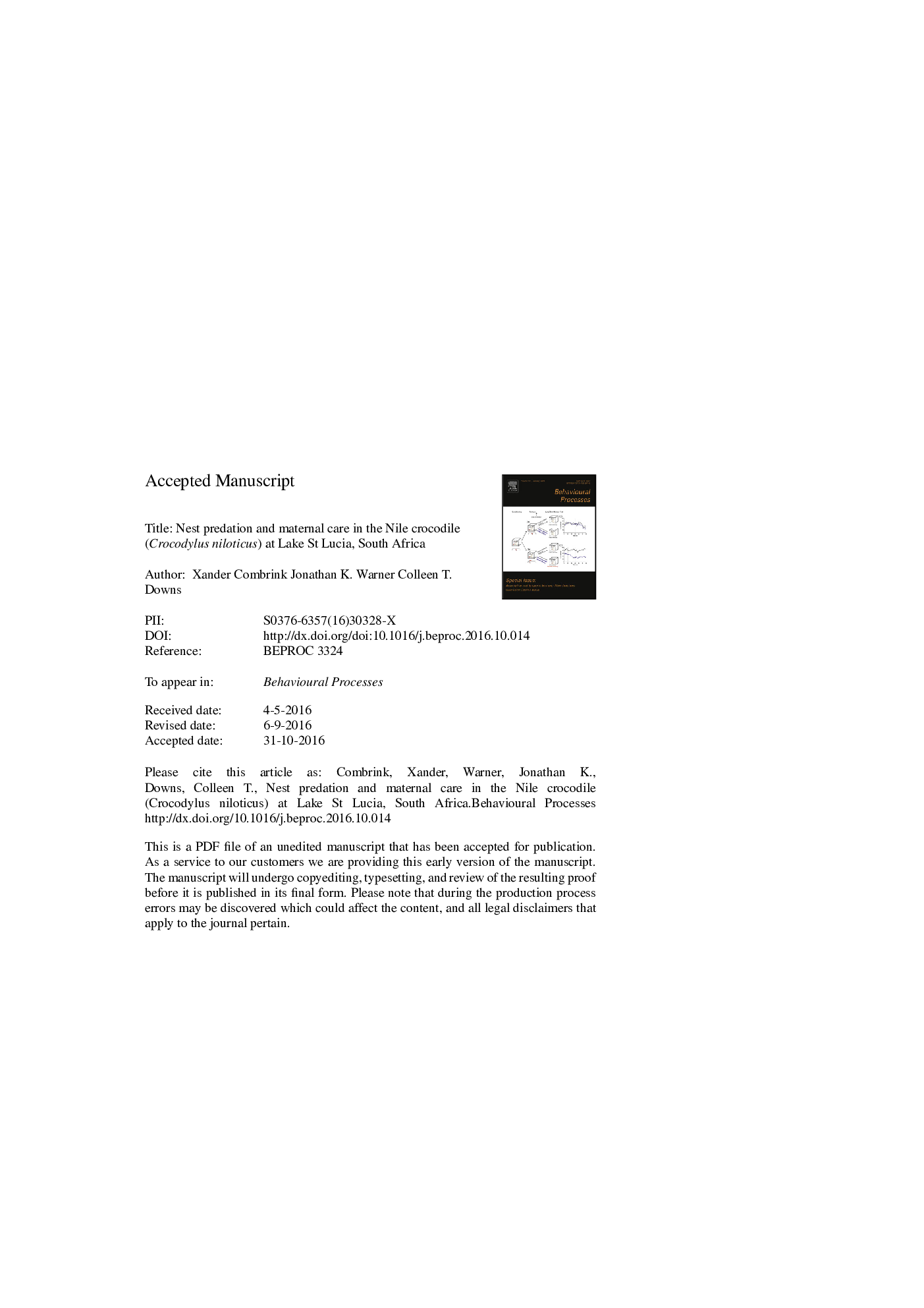| Article ID | Journal | Published Year | Pages | File Type |
|---|---|---|---|---|
| 5539756 | Behavioural Processes | 2016 | 22 Pages |
Abstract
Information regarding nest predation, nest abandonment, and maternal care in the Nile crocodile (Crocodylus niloticus) is largely restricted to anecdotal observations, and has not been studied quantitatively. Consequently, we investigated their nesting biology using camera-traps over four years at Lake St Lucia, South Africa. We obtained 4305 photographs (daylight captures = 90.1%, nocturnal = 9.9%) of 19 nest-guarding females. Of 19 monitored nests, 37% were raided by predators (mean = 12.1 ± 6.2 days subsequent to camera placement). All females returned to their nests following first predation, and on average returned three times between predator raids before nest abandonment. Water monitors (Varanus niloticus) and marsh mongoose (Atilax paludinosus) were the main egg predators. Nesting raids lasted 5.9 ± 1.6 days. Diurnally females were seldom on the nest, except during cool/cloudy weather or rain, preferring to guard from nearby shade. Females defended nests aggressively against non-human intruders. Five Nile crocodile females were observed liberating their hatchlings from nests. A detailed sequence of a mother excavating and transporting hatchlings revealed 13 excursions between nest and water over 32.5 h. This, after months of continual nest attendance and defence, is illustrative of the high level of maternal care in Nile crocodiles. Camera-trapping is an effective, non-invasive method for further crocodile nesting behaviour research.
Keywords
Related Topics
Life Sciences
Agricultural and Biological Sciences
Animal Science and Zoology
Authors
Xander Combrink, Jonathan K. Warner, Colleen T. Downs,
